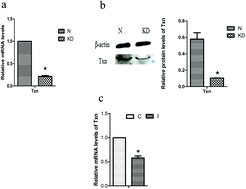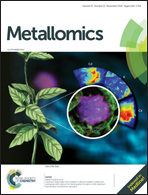Thioredoxin silencing-induced cardiac supercontraction occurs through endoplasmic reticulum stress and calcium overload in chicken
Abstract
The thioredoxin (Txn) system is the most crucial antioxidant defense mechanism in the myocardium, and hampering the Txn system may compromise cell survival. Calcium (Ca) imbalance is associated with a variety of cardiomyopathies, and dysregulation of Ca2+ homeostasis is often considered a critical starting point for heart disease. However, the roles of Txn and the Txn system in maintaining Ca2+ homeostasis in cardiomyocytes have been infrequently reported. Here, we examined the expression of genes associated with Ca2+ channels using a model of Txn suppression in cardiomyocyte cultures (siRNA and Txn inhibitor) and report that Txn knockdown can cause Ca2+ overload in the myocardial cytoplasm and release of endoplasmic reticulum (ER) Ca2+, which induces ER stress. Our results showed that Txn knockdown could lead to cytosolic Ca2+ overload through upregulated gene expression of Ca2+ channel-related genes in the cytoplasmic and ER membranes. Furthermore, we find that excessive Ca2+ concentrations in the cytoplasm may increase myocardial contraction, and heat shock proteins may play a protective role throughout the process. Our present study reveals a novel model of regulation for low Txn expression in myocardial injury.



 Please wait while we load your content...
Please wait while we load your content...